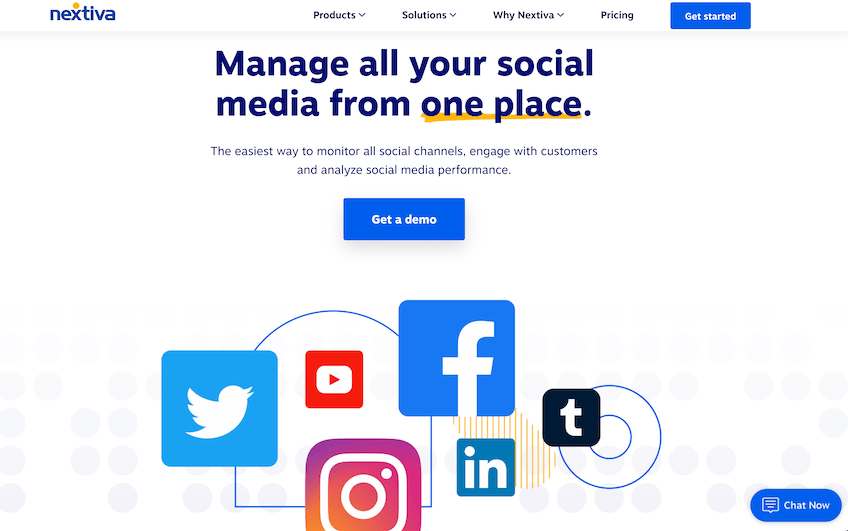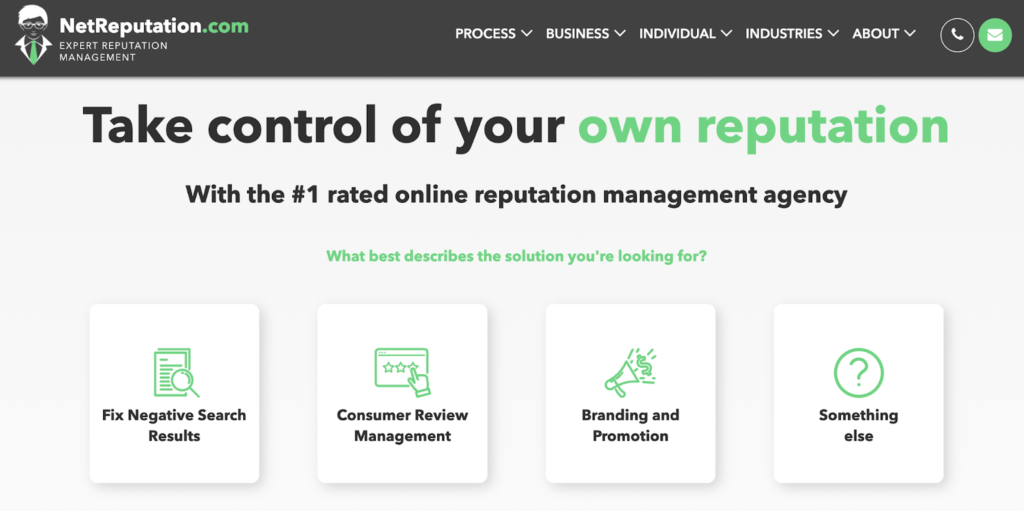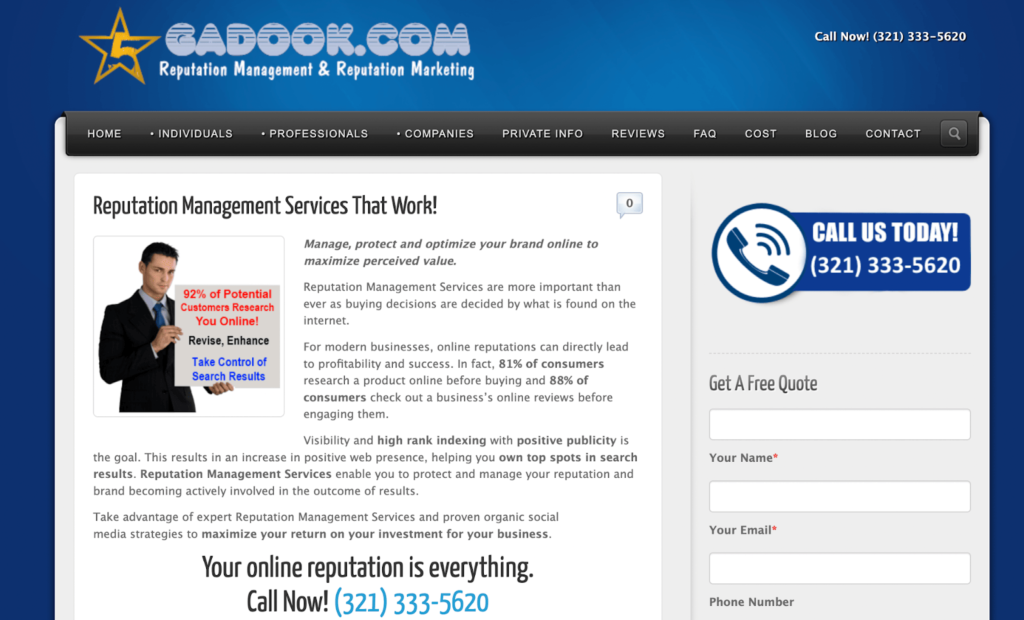Customers and businesses don’t want to work with brands that have a bad online reputation. Whether it’s negative reviews, bad press, or some type of scandal that hurt your company, you must take steps to fix your brand’s perception online.
The cost to clean up your brand’s bad online reputation depends on the source, severity, and initiatives you plan to take.
But if you follow the pro tips and tools recommended in this guide, you can leave that bad reputation in the past and move forward as a brand people can trust.
What is a Bad Online Reputation?
A bad online reputation stems from a wide range of factors, such as bad customer reviews, brand mentions with a negative sentiment, bad press, fake or inaccurate reviews, viral social media posts, and deliberate attacks against the business.
At times, a poor online reputation may come from an event that changed the way people see your business. It could be a credit card data breach or the brand’s CEO getting arrested.
These factors are prevalent whenever a current or prospective customer searches for the brand online, with the negative sentiment being obvious in search engines and review sites.
The Basic Costs of Cleaning Up Your Brand’s Bad Online Reputation
These are core components of cleaning up your company’s online reputation. The costs of each vary based on your approach.
Online Reviews
The vast majority of consumers and business buyers read online reviews before making a purchase. This holds true for physical products, services, food, digital products—everything.
So if you have lots of bad online reviews across multiple review websites, you need to prioritize this initiative. It’s free and easy to claim your profiles on review platforms. This gives you a chance to respond to negative reviews and flag fake reviews for removal.
In extreme cases where a brand has hundreds or thousands of negative reviews, it’s worth paying an online reputation expert to handle those reviews on your behalf. These services typically start around $500 or $1,000 per month.
Trust
People won’t buy from brands that appear untrustworthy online.
Unfortunately, you can’t buy trust. Instead, you must take steps to clean up your website and online presence.
Make sure your website has accurate information that’s useful to visitors. If you are making claims about your company’s capabilities or if you are giving advice on how to use a product, you need to be accurate. Having a useful website also keeps visitors hanging around longer, which improves your rankings in Google searches.
Eliminate pop-ups, ads, and clutter on your website. Make sure you’re using HTTPS and have an SSL certificate to secure the site. Put trust seals on your website and make sure it’s clear that your checkout process is safe—making visitors feel comfortable about entering credit card numbers and other personal information.
Most reputable web hosting providers offer free SSL certificates. Making minor website redesign changes shouldn’t cost you more than a few hundred dollars.
Social Media
In today’s day and age, it’s strange if a brand can’t be found on social media. It’s a red flag if customers and prospects can’t find your profile or if it looks like the profile is inactive.
First, you need to make sure that you have a social media profile on all major channels where your target audience spends time. This is 100% free.
Next, you must keep those profiles active and make an effort to post at least a few times per week. Engage with your followers, and make it clear that the business is running. Some people interpret social media silence as a sign that a business has closed.
All of these efforts are free unless you’re going to pay an agency to manage social channels on your behalf. Automated social posting tools and social listening tools typically range from $50 to $250 per month.
Public Relations
PR can be expensive if you’re working with a top-of-the-line firm. On the low end, retainers start at around $2,000 per month. But some PR agencies charge upwards of $5,000 to $10,000 per month as a starting rate.
If this is out of your budget, you can consider trying to manage PR on your own. Platforms like HARO (Help a Reporter Out) connect journalists with businesses. So if you’re doing something good in the community or you’re sponsoring an event that seems newsworthy, you can use platforms like this as a way to build relationships with reporters.
Net Promoter Score (NPS)
NPS is a KPI that measures the willingness of your customers to recommend your brand’s products or services to others.
To calculate NPS, you’ll need to survey your customers and ask them how likely they’d recommend your business on a one-to-ten scale. Then take the percentage of promoters (nines and tens) and subject the percentage of detractors (zero through six) to get your NPS.
Survey software for businesses usually starts around $25 per month. But finding out this metric is crucial in determining whether your bad online reputation is affecting your current customer experience.
Search Engine Optimization (SEO)
The concept of SEO in reputation management is fairly straightforward. You’re trying to dominate the top search engine results with positive content that you can control.
Similar to traditional SEO initiatives, this involves several different strategies and tactics over a long period of time to benefit from results. Examples include:
- Optimizing your website structure
- Building a high-quality backlink profile
- Producing regular blog content for related keywords
- Analyzing your competitors
- Logical internal linking
There are really dozens more. If you’re new to this, you can read our step-by-step guide on how to learn SEO. It covers everything from keyword research to technical SEO and beyond.
In terms of the cost, it really depends on your methods and resources. You could do all of this stuff for free if you’re willing to put the work in yourself.
At a minimum, you’ll need some quality SEO software for keyword research and competitor analysis. The good tools tend to start around $100 to $400 per month.
Alternatively, you can work with an SEO agency. Depending on the scope, these can range anywhere from $500 to $5,000 or upwards of $10,000 per month. You can check out our complete reviews of the best SEO services for alternative options that fit your specific needs.
3 Tools to Improve Your Brand’s Reputation Online
These three tools will shorten the path to success as you’re trying to clean up your company’s bad online reputation.
#1 — Nextiva

Many online reputation management services are expensive and can cost businesses upwards of $10,000 per month to get started. But if that’s not in your budget, Nextiva’s social media management platform is an affordable alternative to consider.
With plans starting at just $149 per month, you can take total control over your brand’s social media perception to begin the repair process. The software comes with an all-in-one social inbox, which is a single screen for viewing and responding to messages from every social site. This is a quick and easy way to engage with your audience and show followers that your profile is active.
You can also use the tool to schedule posts in advance and monitor what’s being said about your business online. All of your reputation metrics can be tracked in Nextiva’s performance dashboard. The platform even supports advanced capabilities, like turning messages into tickets and creating custom response surveys.
Overall, it’s the best value when you’re comparing the costs of cleaning up your brand’s online reputation.
#2 — NetReputation

NetReputation is an excellent solution for any business that needs help getting their online reputation back on track. They offer services to suppress negative results from search engine listings, making it much more challenging for people to see those results if they Google your business. They can even help remove certain results from search engines altogether.
Once NetReputation cleans up your bad brand image, you can continue using them for online reputation protection and monitoring. This will help you quickly resolve and stay on top of bad stories, poor reviews, and negative sentiment before things get out of control. Check out our complete NetReputation review to learn more.
#3 — Gadook

If you think your bad online reputation is damaged beyond repair, Gadook can help. They specialize in brand-building and re-branding services.
While these scenarios aren’t always as common, they can happen. In some instances, a complete rebrand will be the answer to your problems. So it’s best to go with an agency that specializes in these types of services since they’ve been through this process before and understand what works.
5 Pro Tips For Cleaning Up Your Brand’s Bad Online Reputation
You can start cleaning up your company’s bad online reputation today. These quick pro tips below are easy, require minimal effort, and you can start building momentum toward holistic reputation management.
Pro Tip #1 — Remove Negative Reviews and Encourage More Reviews
Online reviews aren’t permanent. Yelp, Google, and every major review platform have rules and guidelines that must be followed when it comes to reviews. So if a negative review violates any of those guidelines, you can flag them for removal.
Just pull up the review guidelines of whatever review site you’re on, and compare your negative reviews against those guidelines. Some should be fairly easy to spot. For example, reviews with profanity are usually easy to get removed.
For those of you who don’t want to do this on your own, you can use an online reputation management company to handle this initiative on your behalf. Since they do this stuff on a daily basis, they know exactly what to look for and how to get borderline reviews removed.
Simultaneously you should also be encouraging more reviews to drown out the negative ones. This is as simple as sending a link to review sites in email campaigns, delivery receipts, and post-purchase follow-ups.
Having lots of reviews about your business speaks volumes about your reputation. Even if some reviews are negative, a business with hundreds or thousands of reviews shows customers that the company is legitimate.
Many people won’t consider buying from a brand if the business only has a handful of reviews. So even if you can’t eliminate every single bad review, those remarks can still be helpful for your business.
Pro Tip #2 — Highlight the Positives
A quick way to improve your brand’s perception is by highlighting any positive news that you’re doing. You can even send stories to local and national news publications to try and get these stories picked up.
Fundraisers, charitable contributions, offering scholarships, sponsoring community events—all of these are positive actions that you can share about your business.
If you’re making an effort to use green energy or using recycled materials in your products, that’s worth mentioning. Maybe you have inclusive hiring practices or support programs to employ veterans. People love to hear these stories.
To be clear, we’re not saying that you should do any of these things strictly for the benefit of improving your reputation. Instead, we’re saying that you should highlight the good that you’re already doing or were planning to do.
So when a potential customer or partner Googles your business, it increases the chances of positive stories appearing in the search results ahead of negative news or bad reviews.
Pro Tip #3 — Take Control of Your Online Content
You don’t have to wait for a reporter or blogger to say something positive about you. Say it about yourself!
Most businesses don’t realize this, but you have a say in what’s being said about you online. Use your existing platforms to put out content about your business that drowns out any negative stories or news.
Push out blogs, social posts, videos, emails, and anything else you can think of that sheds some positive light on your organization. Share photos and stories of your employees.
You can even create customer stories and case studies to highlight how your brand has helped other people and other businesses. These types of efforts can even help you with SEO reputation management, as there will be more information about your brand in the search results.
Prioritize quality over quantity. Sometimes poorly-produced content can backfire.
For example, if you’re planning to create a new video every week, make sure you invest in a quality camera and microphone. Prospects might be hesitant to purchase your goods or services if it looks like you’re running a low-budget operation. The quality of your content is a direct reflection of your brand.
Pro Tip #4 — Clean Up Your Personal Reputation
Many times, something done by a business owner, manager, executive, or employee can have an adverse effect on an organization.
Maybe your VP of Marketing was arrested. Or Maybe your CEO was caught on video doing something stupid in public. These things happen.
While it may not always be fair, the actions of just one person in your company can implicate your entire organization. People automatically assume that the business is guilty, too, and they don’t want to support brands that employ someone who went viral for the wrong reasons.
If you fall into this category, there are certain reputation management companies out there that specialize in individual reputation cleanups. They can help with mugshot removals and other similar initiatives in this category. This will help ensure one person’s actions aren’t tainting your brand image.
Pro Tip #5 — Set Up Alerts For Brand Mentions
Fast action is the best way to be diligent when it comes to cleaning up and monitoring your brand’s reputation. A simple alert that notifies you when someone mentions your brand online can help you take control of a bad situation before it gets worse.
You can set these up for social mentions, review alerts, and even alerts for blogs and news stories.
If you’re working with an online reputation management company, they typically offer some type of alert system or dashboard with all your brand mentions. Alternatively, you can just use Google Alerts or set up notifications on a social media management tool as a quick way to help you out.
These alerts can help you act instantly before a bad review or negative story gets picked up by another source. We have brand mention alerts set up on all of our websites for this exact reason.
What to Do Next
Now that you’re on the way to cleaning up your brand’s bad reputation, it’s time to ensure you maintain that reputation for the future. Offering exceptional customer service is one of the best ways to approach this initiative. Check out our guide on the best customer service software to help you achieve this goal.
Another great way to build and maintain a positive online reputation is through your employees. If you treat them right, your staff can become your best brand advocates. There are some great employee engagement tools on the market to help you with this process.
